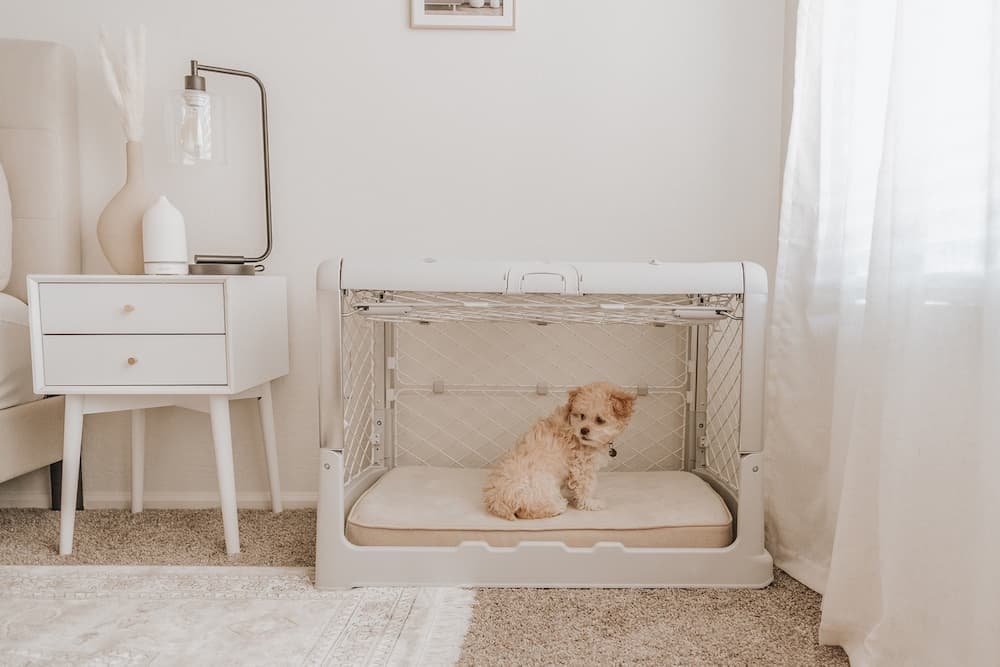10 Dog Adoption Mistakes You Don’t Want to Make

Shelters and animal rescues are filled with adorable, adoptable dogs. Every year, two million dogs from American Bulldogs and Yorkshire Terriers to quirky and adorable mixed breeds are adopted into their forever homes.
Maybe you’ve been thinking about adopting a four-legged companion for long walks, games of fetch, squeaky-toy play dates, and late night snuggles on the sofa. Before you fill out an application to adopt, make sure to avoid these 10 dog adoption mistakes.
Mistake #1: Making a quick decision
Browsing online adoption profiles or walking through the shelter and looking at all the dogs eagerly waiting to be adopted has you ready to fill out an application now. Dr. Gary Weitzman, president and CEO of the San Diego Humane Society, advises against making a decision on the spot.
“Avoid rushing into a decision about adding an animal to your family,” Dr. Weitzman says. “Adoption is a commitment for the lifespan of the pet. You’ll want to ensure you have the time and space in your heart and home to care for your new family member.”
Fostering is a great option to help you decide if you’re ready to make a long-term commitment.
Mistake #2: Choosing a dog based on looks
It’s hard not to fall in love with those big brown eyes, floppy ears or scruffy fur, but one common dog adoption mistake is choosing a dog based solely on their looks. It’s important to consider the breed, too.
“When you adopt solely based on appearance, you run the risk of not getting a good match for your needs and lifestyle, and for the important needs of the pet to live a happy and healthy life,” says Dr. Weitzman.
Mistake #3: Focusing on shelter behavior
Shelters are loud, cold, stressful places and dogs can have different reactions to unfamiliar environments.
“Many dogs act differently in the shelter than they do in a home environment,” Dr. Weitzman says.
Instead of dismissing a dog that jumps at the kennel door as “too energetic” or a dog cowering the corner as “too shy,” get to know them outside of their shelter environment. Most shelters have areas where potential adopters can spend time with dogs outside of their kennels to get a better read on their temperament.
Mistake #4: Forgetting to ask questions
Shelter and rescue workers spend a lot of time with the dogs and can provide important insights into their temperaments, training, and exercise needs.
“Due to the nature of rescue, we don’t always know a dog’s history, but you should always ask,” says Dr. Roberta Westbrook, chief veterinarian and animal medical officer at Houston SPCA. “[Asking questions] will help you better understand your new pet and…knowing the animal’s history will give you a hint to the kind of training they will need. This helps you decide if the pet adoption is a good fit for you.”
Mistake #5: Expecting your new dog to settle in immediately

Your home might be quieter and more comfortable than the shelter, but it’s still unfamiliar. Even dogs that lived in foster homes with all of the creature comforts can be unsettled in their new environment — and that’s normal.
Dr. Weitzman notes that it takes at least 3 weeks for an adopted dog to settle in, but some dogs may need longer to feel comfortable and start building trust. In the interim, they may try to hide or refuse to eat or drink for a few days.
“We ask adopters to be patient and give their new family members a chance to adjust,” Dr. Weitzman adds. “Try to give your dog space and allow them to go at their own pace.”
Mistake #6: Expecting your pets to be instant BFFs
When you thought about adopting a second dog, you imagined finding the perfect playmate for your existing pup. But bonds take time and introducing your pets too quickly is a big mistake.
Dr. Weitzman suggests introducing the dogs on neutral ground, preferably outside, before bringing them inside your home. Taking them for a walk together and giving them some time to get used to each other can help them feel more comfortable.
“It is important to take it slow and get it right,” he says. “If you bring the newly adopted dog straight inside, your resident dog may feel they are invading their territory.”
Mistake #7: Skipping the pet proofing
Installing latches on cabinet doors, covering trash cans, closing toilet lids and adding covers to heating vents before adopting a new dog may seem like overkill, but Dr. Westbrook believes it’s a bad idea to bring home a dog to a home that hasn’t been pet proofed.
“A safe environment will allow you to focus on any needed training, such as potty-training, or letting them take their time exploring the areas of your home,” she says.
Pet-proofing can also prevent an emergency trip to the vet because your new dog got into something that should’ve been off limits.
Mistake #8: Ignoring due diligence
Housing issues are among the top reasons dogs are surrendered to shelters. Before adopting a dog, confirm that your lease allows pets and check on weight or breed restrictions that could force you to return your newly adopted dog.
Dr. Westbrook also suggests researching the cost of pet ownership before bringing a dog home. “Consider monthly expenses such as dog food, grooming, and heartworm prevention or yearly expenses such as shots, veterinary exams, and possible illnesses or medical emergencies” to minimize the odds you’ll need to give up your pet for financial reasons.
Mistake #9: Failing to secure a local vet

A nationwide veterinary shortage may make it difficult to get a vet appointment. It’s a good idea to call local clinics to see which veterinarians are taking new patients to ensure your new family member has access to quality medical care. You can also use an online vet finder to browse veterinarians in your area.
Dr. Weitzman suggests having your pet checked by a vet within two weeks of adoption.
“Your new pet is now a family member and all family members should have a doctor – not only for keeping vaccinations up to date – but also in cases of sickness or emergencies,” Dr. Westbrook adds. “You also want to make sure you are comfortable with the veterinarian you choose well in advance of any potential illness.”
Mistake #10: Adopting a dog from an unknown source
There are no shortages of adoptable dogs. You’ll see ads online, posts on social media, and flyers at the pet store. However, it might be a mistake to hand over cash or authorize an e-transfer to purchase a dog from someone you don’t know.
“Make sure you are adopting from a legitimate, reputable shelter or rescue. If you are, your dog is up to date on vaccinations, microchipped, spayed or neutered, and has been assessed behaviorally and medically,” Dr. Weitzman says.
Keep in mind that not all people and places that advertise dog adoptions are legitimate or ethical. In fact, some so-called rescue organizations will pay high prices for designer and mixed breed dogs at auction, contributing to the puppy mill problem. Before adopting from an organization, do your due diligence and research the shelter or group before agreeing to pay an adoption fee and take a dog home.
“Consumers have the power to help put an end to irresponsible and illegitimate breeders by not buying dogs and puppies from them,” Dr. Weitzman says.









